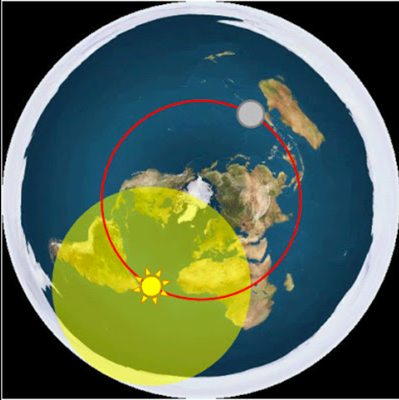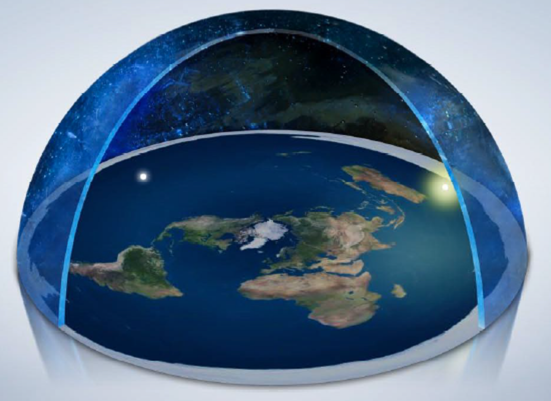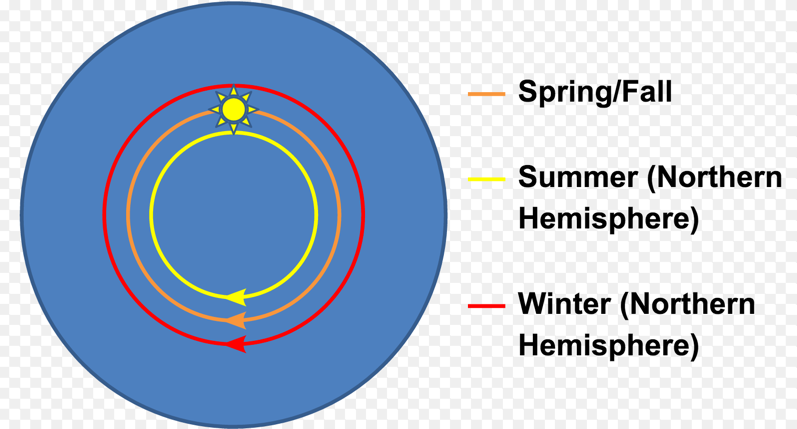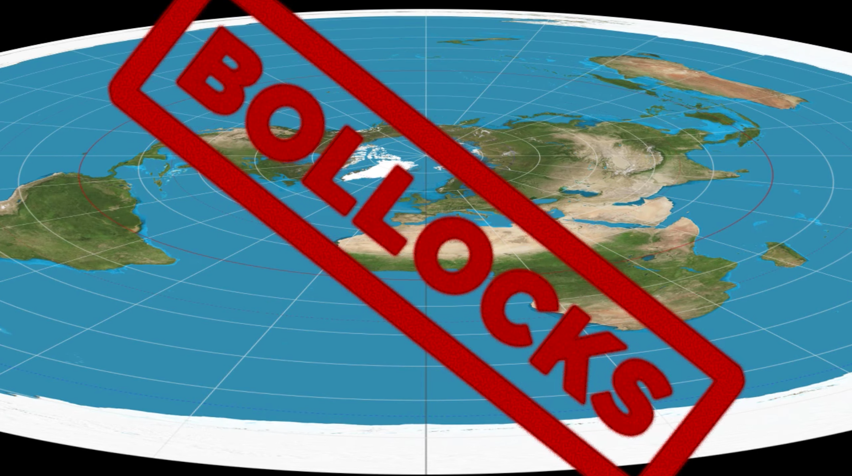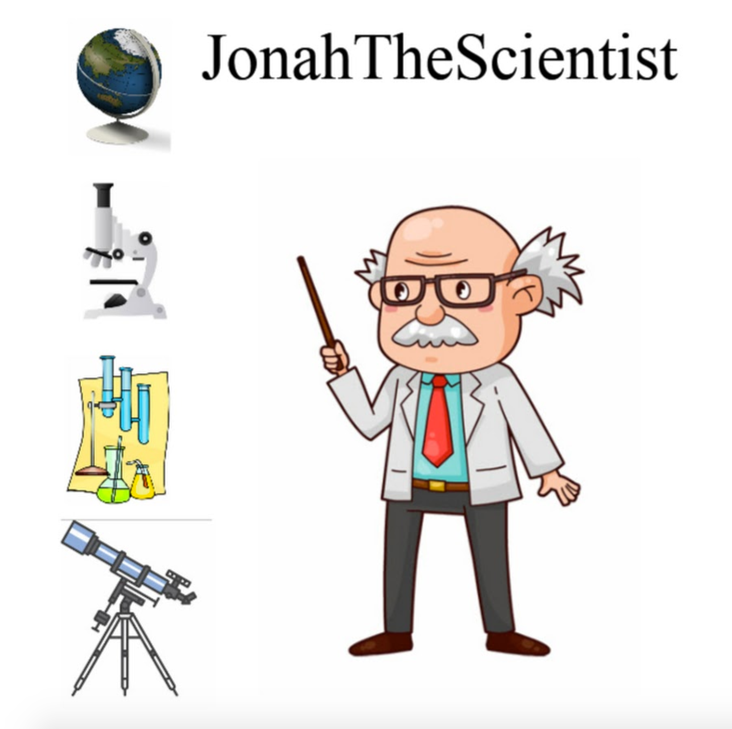How to photograph the Moon during a total Solar Eclipse (August 21, 2017)
Dear Readers,
This is among the first photographs (pristine, no painting, no CGI) of the Moon taken during a total Solar Eclipse.
The photos and technique for accomplishing this task was developed by Trevor Olsen. Do not copy or reproduce these photos without his consent.
The Moon resolution shown below is actually the detail that the camera itself pulled out during the eclipse, on this single deliberate OVEREXPOSURE. This is the only one of nine photos that captured the Moons image.
This photo was combined with 8 others to create the composite finished product also shown below (2nd photo down from here).
Earthshine is the reason we can see the Moon during the total eclipse. When sunlight hits the Earth, about 30% is reflected back out into space. And so the Earth shines. That reflected light illuminates the side of the Moon facing us, thusly allowing us to see it. The percentage of sunlight reflected is called the albedo. As an example, for the planet Venus it's 75%, for Saturn 47%, and for Jupiter 52%. The amount of sunlight reflected back into space depends upon the chemical constitution of an objects atmosphere and / or surface. Bare soil reflects back 17%, while desert sand is 40%, and snow/ice can be as high as 90%.
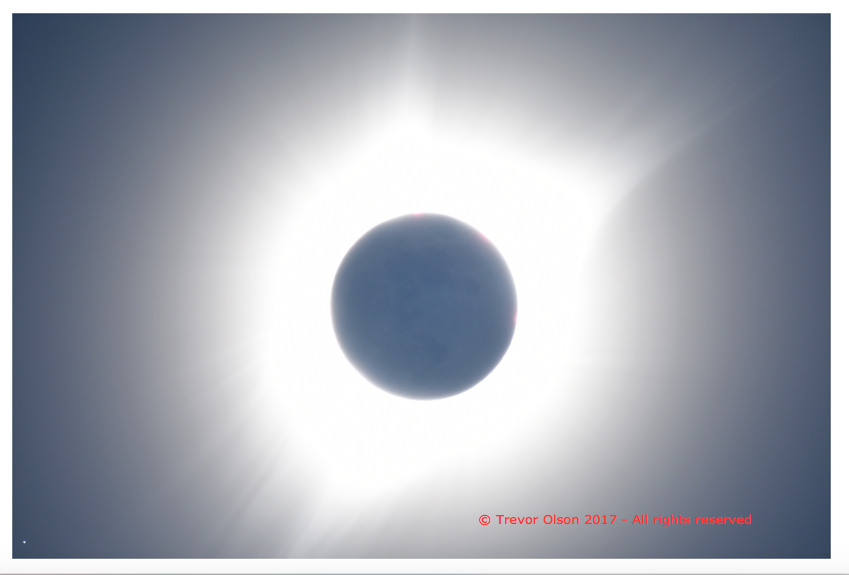
As described by Trevor Olsen - the following photo is bracketed...
Bracketed photo means that you take several exposures. The camera "meters" to what it thinks is the proper exposure, however when you bracket, you take photos that the camera thinks are underexposed, one 'correctly' exposed image, and then pictures that the camera think are overexposed. You can bracket with as many or as few over/underexposed photos as you want.
In this case, I bracketed with 9 exposures. (4 under, 1 correct, 4 over) To create this photo, I combined three of the most underexposed photos to get the detail in the corona. However, those exposures do not give any moon detail. So I picked one of the overexposed photos and took the moon from that.
So yes, it is very heavily post processed. But all the base photos were taken by me within about 10 seconds of one another. The moon detail is actually the detail that the camera could pull out during the eclipse itself.
Adobe Camera Raw was used on the above pristine image to bring out more lunar surface, dark/light contrast for the composite picture below
Eclipse over Tetonia, ID. Moon detail with corona detail
Photographer- Trevor Olson
Location of photo - Tetonia, ID
Date/Time of photo - 8/21/17 ~11:30 MDT
Equipment - D7200 w/ Sigma 150-600mm Sports Lens. Manfrotto Junior Geared Head.
Description - Bracketed photo that was tone mapped to pull out some extra detail
Website - https://www.etsy.com/shop/PhotosByTrevor
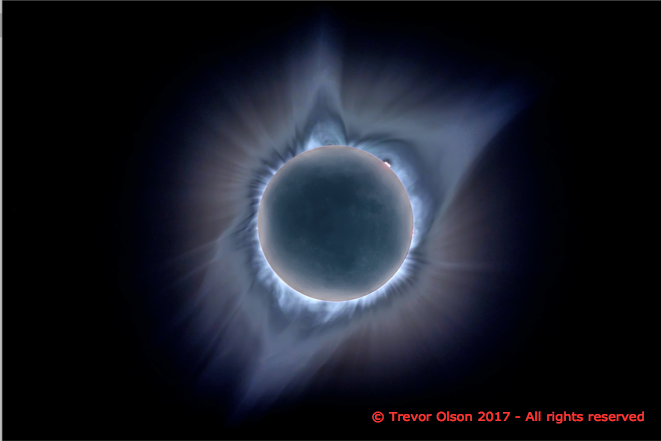
Here are the camera settings that the single Moon photo was taken with...

- - -
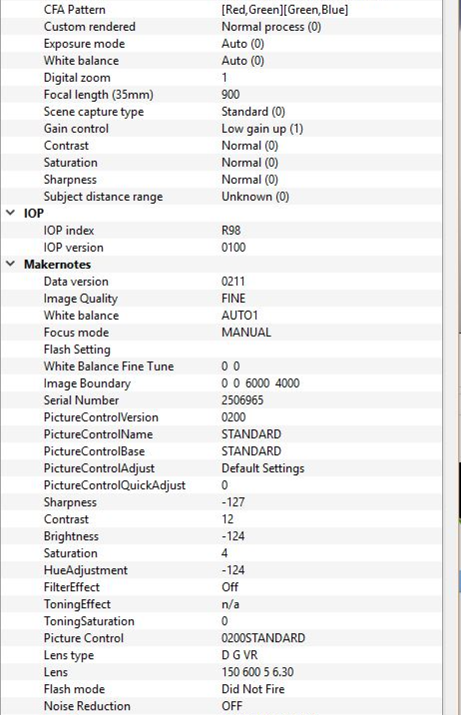
- - -
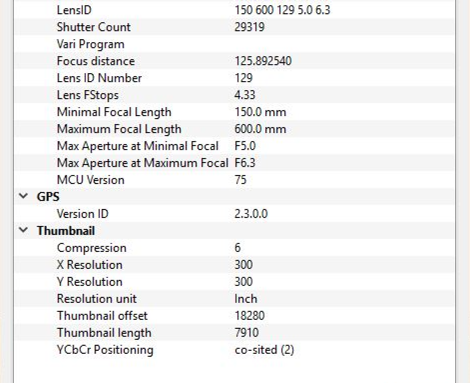
- - - - - - - - - - - - - - - - - - - - - - - - - - - - - - - - - - - - - - - - - - - - - - - - - - - - - - - - - - - - - - - - - - - - - - - - - - - - - - - - -
September 19, 2017 update:
The following photo of the August 21, 2017 eclipse with the Moon and Solar Corona are from Emanuele Sordini and Lorenzo Comolli.
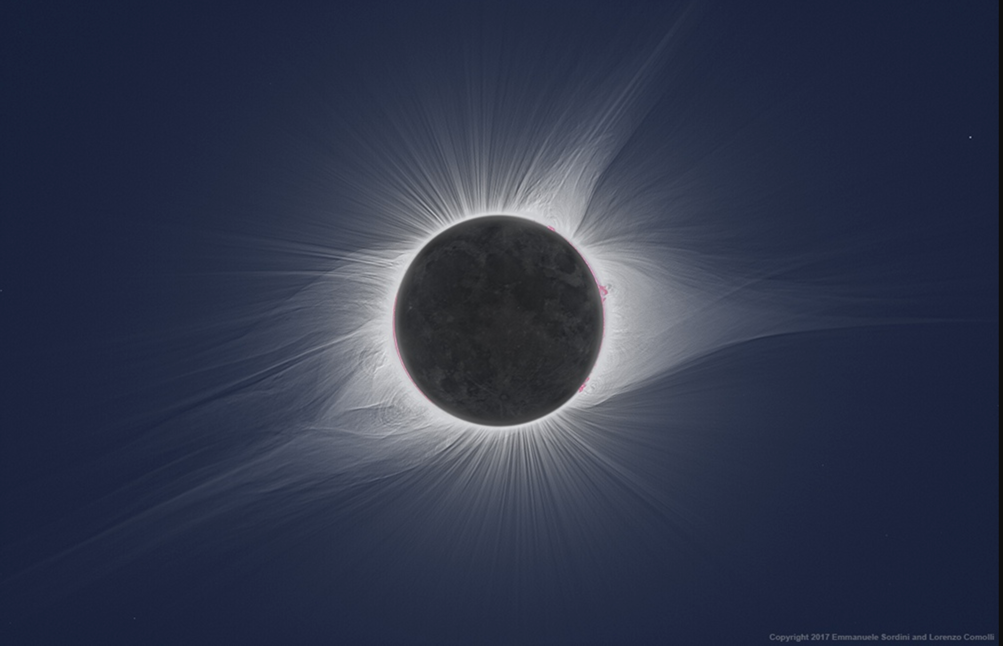
- - -

- - - - - - - - - - - - - - - - - - - - - - - - - - - - - - - - - - - - - - - - - - - - - - - - - - - - - - - - - - - - - - - - - - - - - - - - - - - - - - - - -
September 24, 2017 update:
YouTube channel Fudmottin demonstrates how the solar eclipse pictures taken by Soundly captured the image of the Moon via Earthshine.
Video at - https://www.youtube.com/watch?v=C4fQxxL6tKE
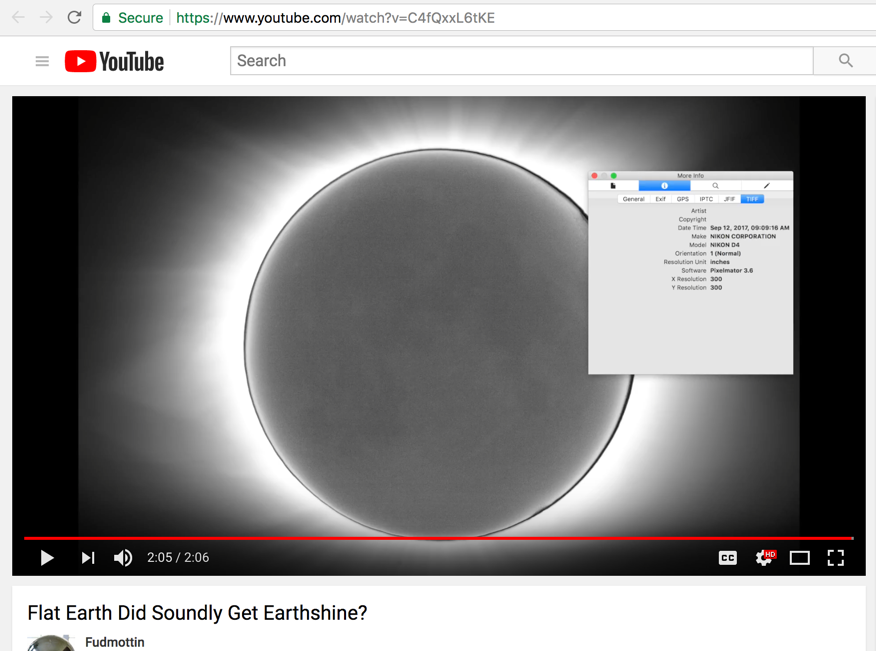
- - - - - - - - - - - - - - - - - - - - - - - - - - - - - - - - - - - - - - - - - - - - - - - - - - - - - - - - - - - - - - - - - - - - - - - - - - - - - - - - -
November 25, 2017 update:
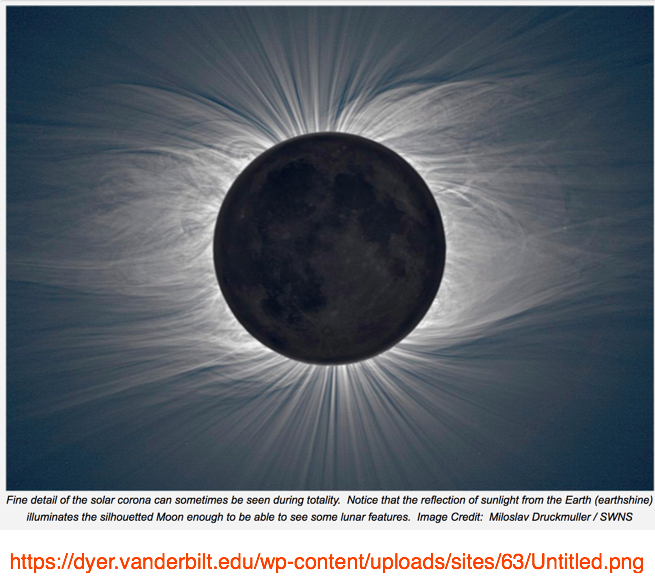
The Total Solar Eclsipse of August 21, 2017, Dyer Observatory, Vanderbuilt University
https://dyer.vanderbilt.edu/entertainment/solar-eclipse/
- - - - - - - - - - - - - - - - - - - - - - - - - - - - - - - - - - - - - - - - - - - - - - - - - - - - - - - - - - - - - - - - - - - - - - - - - - - - - - - - -
November 25, 2017 update:
Photographic Exposure of a Solar Eclipse
http://learn.usa.canon.com/resources/articles/2017/solar-eclipse/photographic-exposure-solar-eclipse.shtml
from the article...
Bracketing, Using the Camera’s Auto Exposure Bracketing (AEB) Feature
Most modern digital cameras, even those with fixed lenses, offer some form of built-in exposure bracketing. On Canon cameras, this is called AEB, for Auto Exposure Bracketing… other brands may use slightly different terminology, but they’ll basically operate similarly.
You’ll usually find a Canon EOS DSLR’s AEB in the red shooting menu, often listed in the menu as “Exposure Comp./AEB” or similar wording. On the EOS-1D series models, however, it’s usually activated by simultaneously pressing two buttons on the top-left of the camera body, usually with a little icon showing three stacked rectangles between the buttons. In either case, once an exposure scale appears on the LCD screen, you then turn the Main Dial (up near the shutter button), to tell the camera how different you want each exposure to be.
Canon’s Auto Exposure Bracketing, in spite of the feature’s name, doesn’t limit you to just using an auto exposure shooting mode, like P or Av. In fact, you can be in Manual exposure mode — which we strongly recommend for eclipse shooting — and still apply Auto Exposure Bracketing. When you activate AEB in the Manual exposure mode, the camera defaults to varying the shutter speed to change each exposure; ISO and lens aperture normally stay where you manually pre-set them.
The number of frames you can bracket is often changeable in one of the Custom Functions menus. Many mid-range and high-end cameras, such as Canon’s EOS 80D through the top-of-the-line EOS-1D X Mark II, allow up to seven frames of bracketed exposures. With less-expensive models, such as Canon’s EOS Rebel series, there’s still an AEB feature — but it’s often limited to three frames per sequence, no more and no less. Set your camera for the maximum number of bracketed frames. Ideally, your best exposure was found in the middle of the bracketed series.
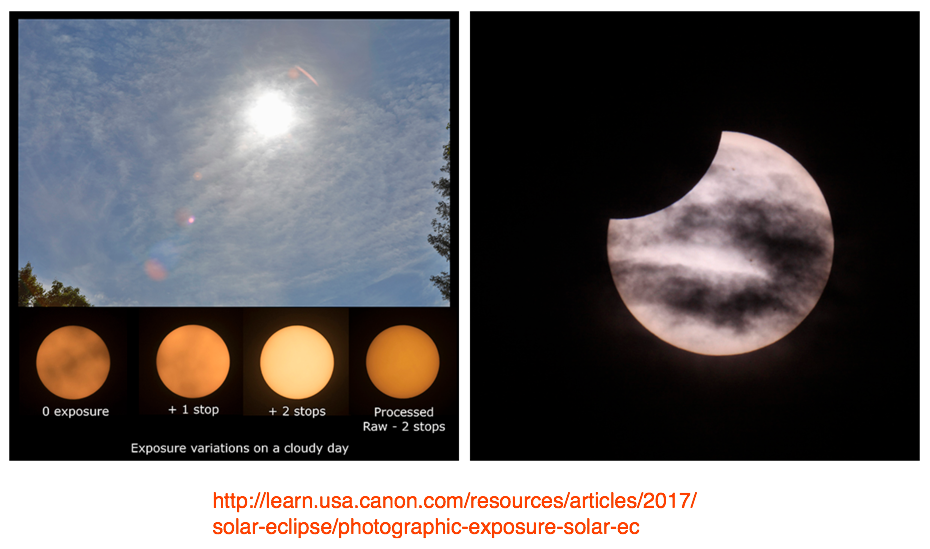
- - 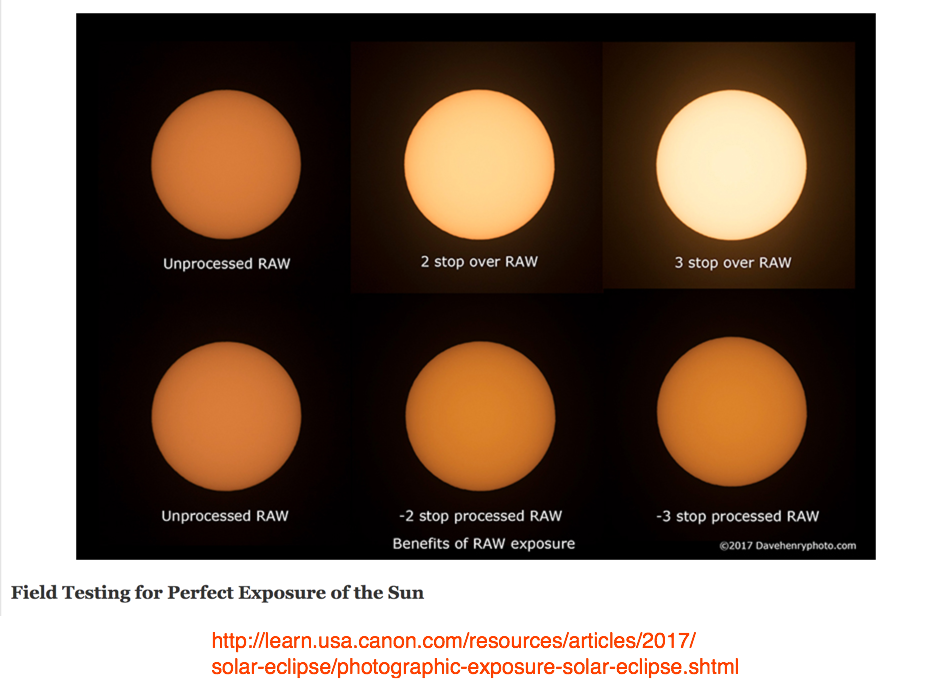
- - - - - - - - - - - - - - - - - - - - - - - - - - - - - - - - - - - - - - - - - - - - - - - - - - - - - - - - - - - - - - - - - - - - - - - - - - - - - - - - -
Depending upon where the Earth is in relation to the Moons shadow on it, determines the type of Solar Eclipse you will see:

- - - - - - - - - - - - - - - - - - - - - - - - - - - - - - - - - - - - - - - - - - - - - - - - - - - - - - - - - - - - - - - - - - - - - - - - - - - - - - - - -
Published on – August 29, 2017
Discussion at - https://www.youtube.com/channel/UC7ipUKERU0tzYFxALJBli4A/discussion
Our home page all articles - http://flatearthlunacy.com
kind regards, JonahTheScientist



